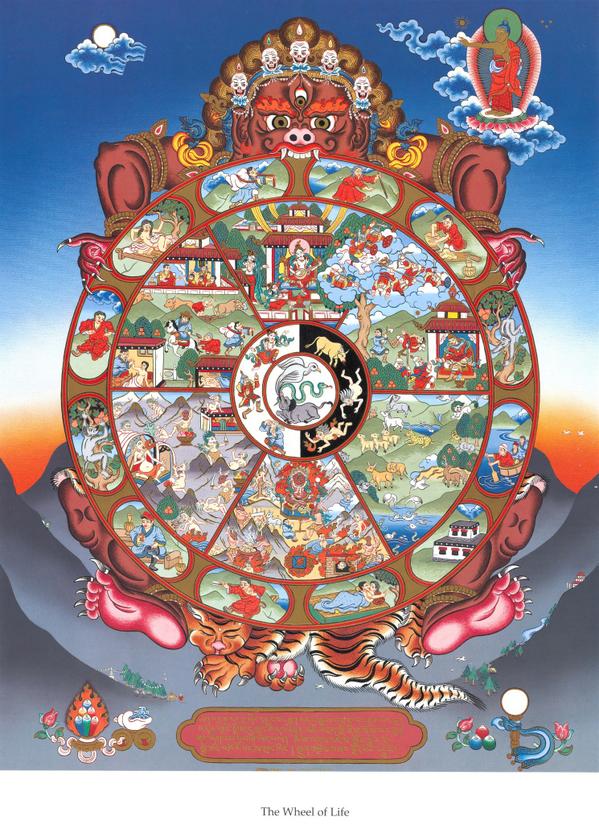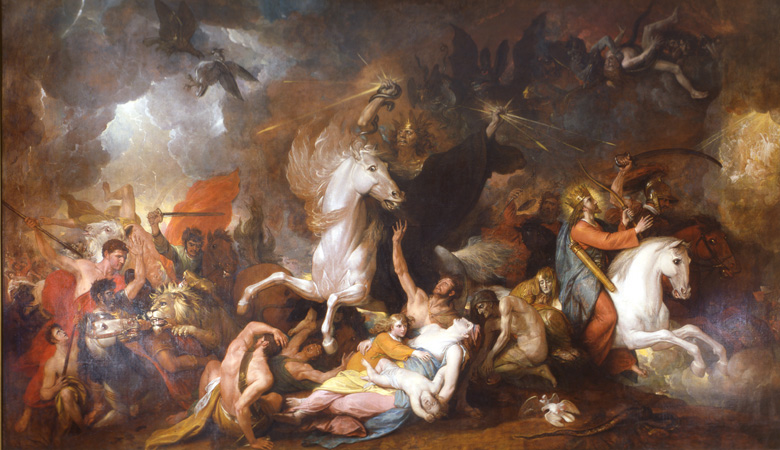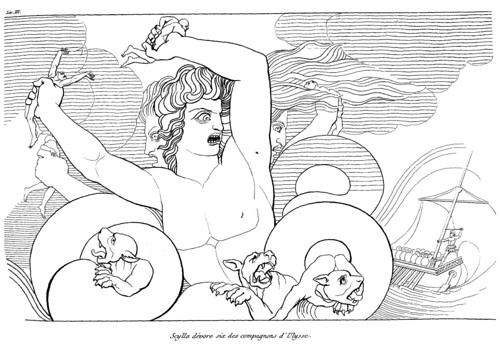First off: in case you've not seen it already, Frog God Games are doing a new printing of
Swords and Wizardry, with new art by Abigal Larson, Gennifer Bone, Jenna Fowler, and others. Pledge one dollar and you get the full-art pdf version.
One dollar. Think of it as a way to pay them back for all those times you downloaded the free version of their rules for nothing.
You can find the kickstarter
here.
Anyway. My reading for
The Coach of Bones rolls on... slowly. Most recently, it has brought me (via a rather circuitous path) to the works of Theodosia Garrow, a minor poet who was born on the South Devon coast in 1816. Most of her work isn't very interesting, but in 1843 she published a long poem called 'The Doom of Cheynholme', and the first section of it caught my eye.
It is, very obviously, a description of a dungeon.
Seriously. You could print this out and hand it to your players and say 'This is a song you hear some old guy singing in the tavern one night', and
that alone would suffice as an adventure set-up. It gives you a description of a dungeon (the ruins of Cheynholme Hall), its history (the seat of a dynasty of murderous lords who followed 'the ancient faith'), a reason to go there (they looted the surrounding countryside and some of their loot may still be in there), a bunch of things to watch out for while exploring it (snakes, poisonous swamps, marble statues which might contain the souls of the dead lords of Cheynholme), and some very ominous suggestions about what once happened there (are 'blood-cemented wall' and 'crime-stained roof' just poetic figures of speech, or are they horribly literal?). It's a bit long, but you could always just use stanzas 1, 3, and 6 if you wanted a shorter version.
Anyway. Here it is.
The Doom of Cheynholme (Theodosia Garrow, 1843)
Cheynholme Hall is a ruin lone
Dank with ivy, and furrowed by age;
In the turrets tall
Of its mouldering wall
The white owl maketh his hermitage;
And beside the edge of its broad hearth-stone,
(Whereon the sluggish mosses creep
In many a full and silken heap,
Like graves of household pleasures gone),
The dark-grey viper and her brood
Bask in the sunny solitude.
Cheynholme Park
is a dismal swamp,
Nought remains of its forest wide,
Save four old trees, which side by side
Blacken and pine in the noxious damp;
Scarred, and stained, and shattered, and bare,
They stand like landmarks of despair
Pointing aloft through the heavy air;
The frog's dull croak, the bittern's shriek,
And the voice of the boughs that wearily creak,
And the rush of the dusky waterfowl,
Winging to rest on the reedy pool,
The plashing beat of the mournful rain,
And the wind with its childish moan of pain—
These are the only sounds that rise,
And with their slow monotonies,
Make such poor mockery of life,
As shivers and wanes
In a sick man's veins,
When the departing fever strife
Hath spared but enough of sense and breath
To shudder and gasp at approaching death!
Fierce, stern, haughty, and bold,
Were the lords of Cheynholme in days of old;
None had a sharper sword in fight
To strike for the wrong, and to vanquish the right;
None had higher and wilder blood
To spur them to evil—to blind them to good;
None could ravage, and burn, and kill,
For the ancient faith, with a hotter zeal;
None could wring with a steadier hand
The last slow mulct from the fainting land.
Brave—proud—reckless and bold—
Fit to be types of the barons of old—
Evermore thirsting for bloodshed and gold.
Now the cry of the poor grew strong and deep;
The hands that toil, and the eyes that weep,
And the mouths that fast, and dare not speak,
Sad day by day—chill week by week,
Rose at last, as the waves arise
When the tempest wakens their energies,
And head over head they bound and roar
'Gainst the black cliffs of the towering shore—
So loud—so vain,
Were the threats of pain,
The gasp of fear—the curse of hate,
And the bursting cry of the desolate,
Which rang thro' Cheynholme's large domain;
For the evil seed throve none the less
Within their ancient mansion pile;
Bearing the fruits of bitterness,—
They sinned and died
In pomp and pride,
Deaf as their marble forms which press
The tombs of Cheynholme's aged aisle,
And as their generations passed,
Each one more mighty than the last,
And, with a brow of harder pride,
Looked in the face of Heaven, and lied,
And revelled, and squandered, and slew amain.
The hearts of the lowly sank again,
They ceased to strive beneath the yoke,
Or wonder at their fate of woe,
Or pray against the want which broke
Their spirits with its torment slow;
But a dull, hopeless unbelief
Palsied the supplicating hand;
They deemed the seal
Of God's high will
Chartered those vultures of the land.
They thought it were a fruitless strife
To wrestle with the rooted sway,
Which, ivy-like, drained forth their life,
And flourished on their hopes' decay,—
So died into their parent soil,
Like dumb o'erlaboured beasts of toil!
But there is judgment for the strong,
And there is justice for the weak,
And there is unrepented wrong,
And crime so venomous—so long,
That its foul mass at last must break.
Dire and swift did vengeance fall
On Cheynholme's blood-cemented wall;
Root and branch, and budding spray
Were hewn from the ancient trunk away;
Their lofty name is borne by none;
Their hearths lie open to the sun;
Their rich domain of field and brake
Is blasted for their guilty sake,
And of their proud oaks' sylvan court
The fierce-eyed lightning makes his sport.
Listen! ye of the stony heart—
Listen! ye of the bloody hand;
For the ruthless deed shall have its meed,
And the crime-stained roof its kindling-brand.










,_1824_(Google_Art_Project).jpg)





